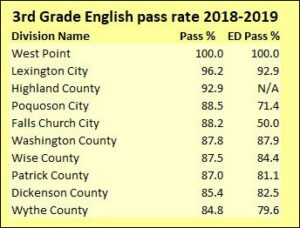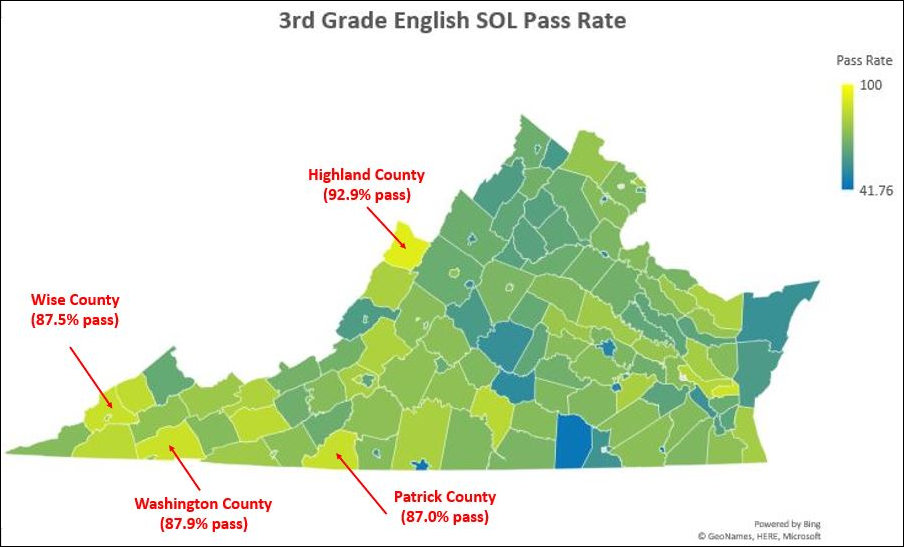Virginia educators are honing in on a key metric, the Standards of Learning pass rate for 3rd-grade English, that needs focused attention. One in four Virginia 3rd graders aren’t reading at grade level by the 3rd grade, and SOL test scores fell for the third straight year, from a 76% pass rate to a 71% pass rate in the 2018-19 school year, reports the Richmond Times-Dispatch.
Third-grade English reading skills are deemed especially critical in childhood educational development. Third grade represents the transition point between learning to read and reading to learn. Studies suggest that half of what students are taught later in school will be incomprehensible if they are not reading proficiently by the end of third grade.
There seems to be no consensus among experts quoted in the article about what to do. Ideas range from hiring more reading specialists to adopting phonics-oriented curricula, to confronting food insecurity. Superintendent of Public Instruction James Lane said Virginia Department of Education staff will take a close look at schools that did not see drops in SOL scores to see what they might be doing right and whether their practices can be replicated.
That’s a dandy idea. I have some suggestions…

Data source: Virginia Department of Education. Note. Data for Highland County is Not Available because the number of ED students is so small that VDOE suppressed the data.
The table at left ranks the ten school districts with the highest 3rd-grade SOL reading pass rates. West Point sets the benchmark for the state of Virginia. Every single 3rd grader passed the reading SOL. Even more apropos from Lane’s perspective, West Point has dramatically increased SOL scores over the past three years — up from 92.3% in 2015-16.
Please note that most Top 10 school districts get superior performance from ED (economically disadvantaged) students. The gap between ED and non-ED is very small — and in the case of Washington County, non-existent. The one exception is Falls Church, where the gap is massive. I would not put Falls Church on my short list of school districts to look to for inspiration. There is a noticeable gap in Poquoson as well, though not as striking.
Another pattern that stands out is that the school districts with the highest 3rd-grade reading pass rates are located in rural counties, almost all of them in western Virginia. One might be tempted to conclude that there was something special about rural school districts that contributes to higher SOL scores. But, then, other rural school districts — Brunswick County and Prince Edward County, for instance — are among the worst performers. Might successful school districts share a common pedagogy such as a commitment to old-fashioned teaching methods such as phonics? It’s a hypothesis worth exploring.
Other lines of inquiry to pursue: Is the success more apparent than real? Do the successful schools have a smaller percentage English-as-a-Second-Language students, economically disadvantaged students, and/or students tagged with disabilities? Do they spend more money or less (adjusted for the local cost of living) than peer school systems?
A final question: Can the experience of successful rural school districts be replicated in inner-city school districts such as Danville (pass rate 44.3%), Fredericksburg (49.6%), Petersburg (49.7%), Richmond (50%), and Manassas (50.4%)?



